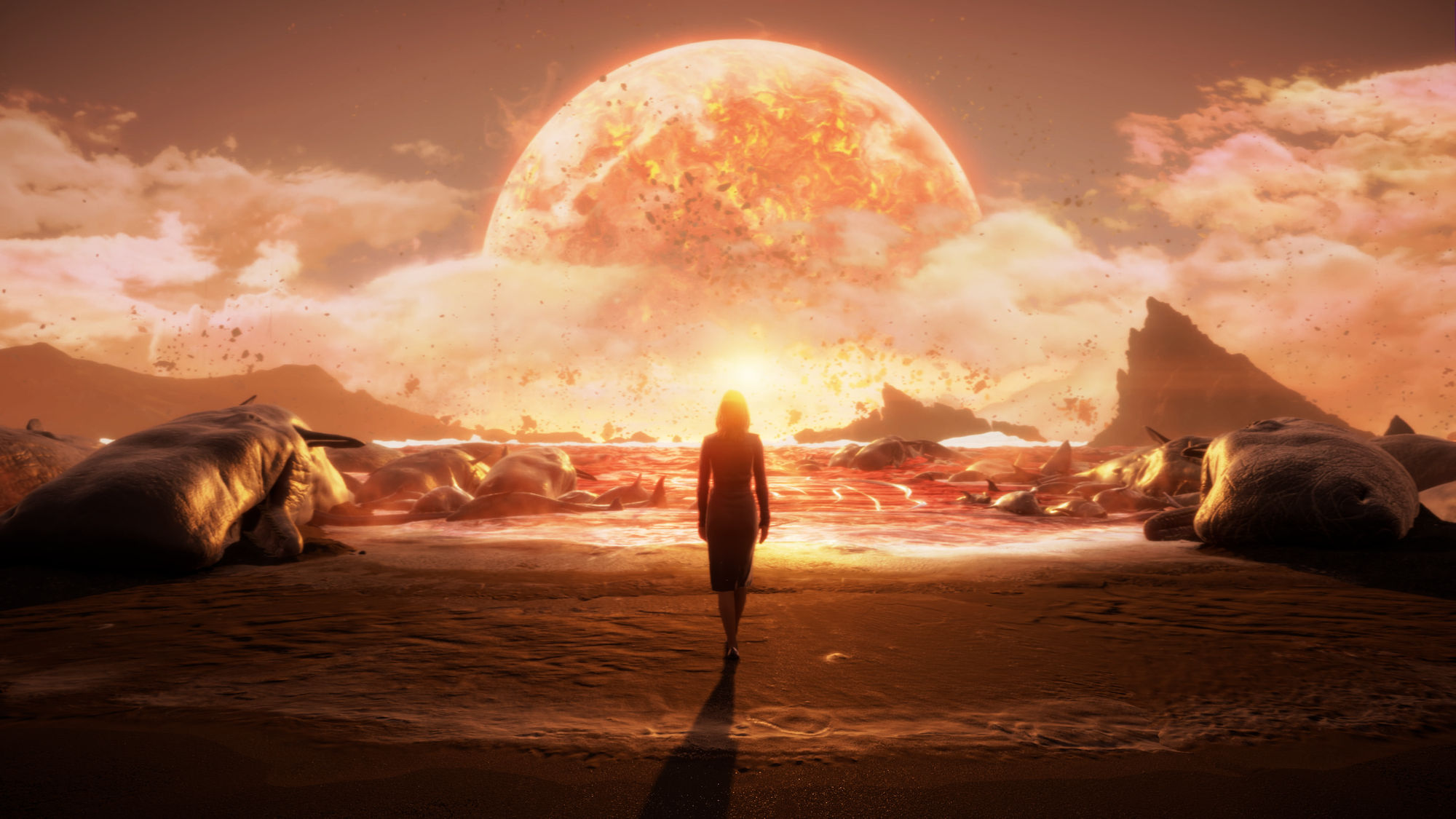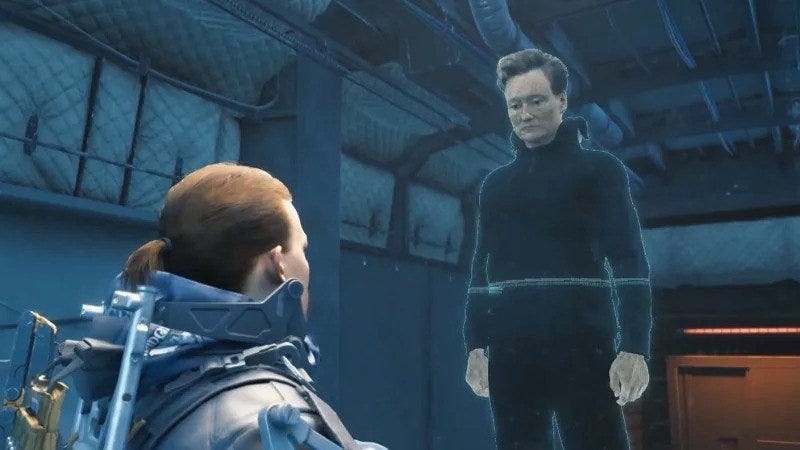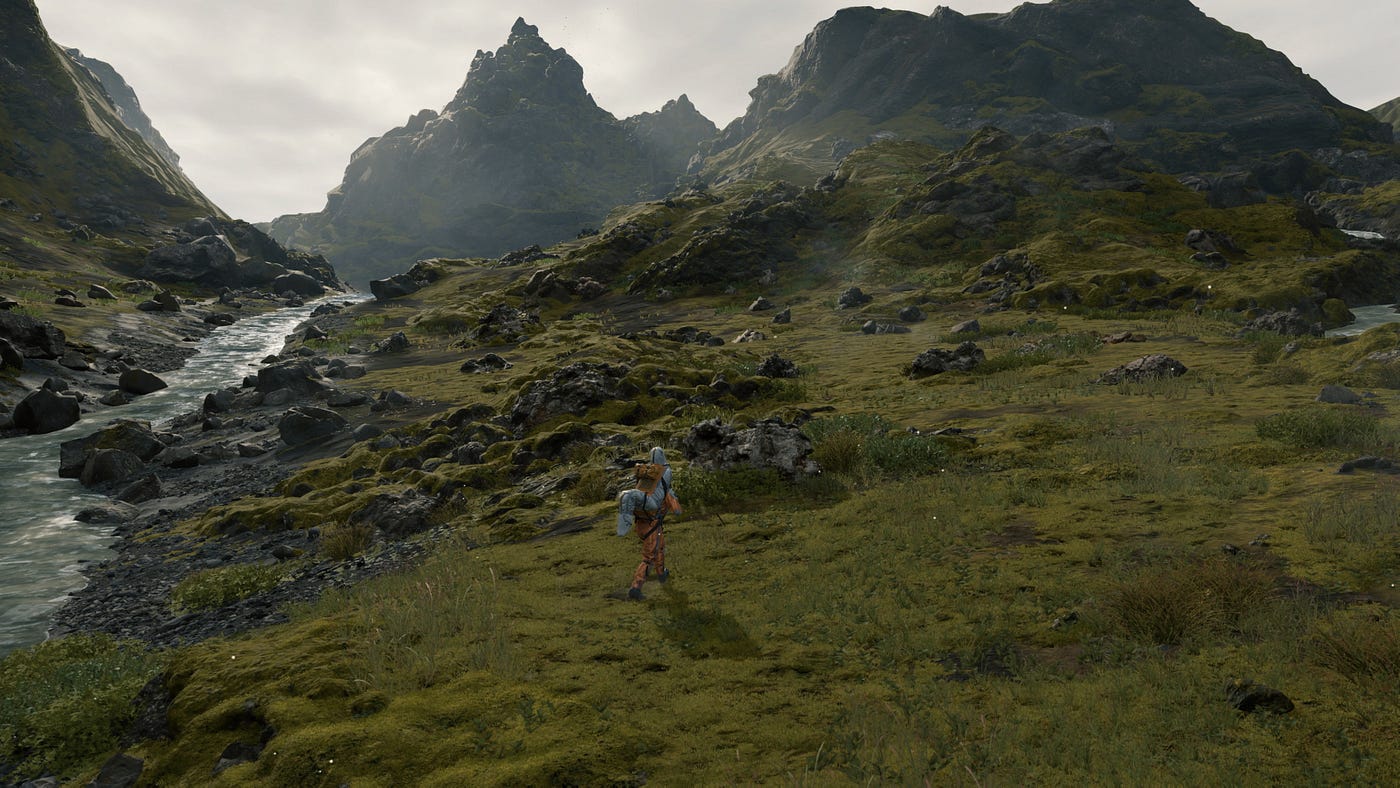Tomorrow is Here
Reflecting on Death Stranding, Hideo Kojima’s perspective on a society of isolated people, and why human connection matters

Sam Porter Bridges adjusts the packages strapped onto his bike before hopping on. There’s no traffic today. There hasn’t been traffic in years. It should make traveling easy, but it doesn’t. Invisible horrors (Beached Things) and visible dangers (terrorists and MULEs) make moving about difficult. This is the reason why everyone stays inside, relying on porters to deliver much needed goods.
America is far from normal. Large metropolitan areas stand while smaller cities and towns fall into ruin. Fenced off with electric barriers, anyone who enters must go through a series of checkpoints. The streets are empty and quiet. When you see someone, it’s never in-person. It’s always through a washed out blue hologram.
Instead of leaving packages on doorsteps, they’re deposited on a conveyor belt that triggers a digitized “thanks” or a little jingle on how the president is grateful. After each delivery, Sam leaves the empty city and drives through an equally empty nation, humming and talking to himself to fill the silence.
Sam isn’t real, but his experiences are feeling less like fiction.
Hideo Kojima’s Death Stranding is a grim story of a world in the aftermath of a crisis that has forced people indoors, fearful of what’s outside. To survive, people rely on porters.
It’s a dangerous job that machines cannot complete on their own due to environmental factors. Sam Porter Bridges and many other porters face hostility on the road and deal with the devastating effects of being alone. Yet without these porters, these remaining blips of civilization will eventually fall to ruin.

Kojima created a game that sought to make the player feel alone in a world where everyone is disconnected from each other because of a past crisis. “And you’re trying to connect this fractured society by yourself. The world is beautiful, but you’re small, just a tiny speck. You feel hopeless and helpless and powerless. You feel so lonely,” (Gault, 2019).
Today, there are so many who feel the same way in the wake of COVID-19. With new stressors and challenges in our lives, it’s easy to disconnect from the world and each other. I’m here to say that despite Death Stranding’s apocalyptic story and today’s pandemic, a positive has emerged. It takes shape in the efforts we make in connecting with each other.
Death Stranding vs. Today
Lately I’ve been drawing similarities between Kojima’s vision to today’s events.
Most areas of the world facing COVID-19 are practicing sheltering-in-place. Restaurants, school buildings, beaches, and other public spaces are closed to reduce the spread.
In Death Stranding, Kojima only provides insight on America and it is an America that is practicing a far more extreme version. This crisis has confined people for years and areas with less support has fallen into ruin. While city checkpoints are unmanned, they are impossible to get through without clearance.
Today we rely on our mail carriers and delivery drivers more than ever to provide us with groceries, takeout, goods, etcetera. These workers are taking great risks to perform this much-needed service, often with no protection (Selyukh & Bond, 2020).
In Death Stranding, porters are also, taking great risks to perform this much-needed service.
Finally, another similarity is the incredible loss of life because of these crises. And despite best efforts to create physical barriers (i.e. facemasks, standing six feet away, barriers), it’s unsafe to move freely about.
Looking at the side-by-side is depressing, but I’m here to say that despite the similarities, we are nowhere near Kojima’s harrowing, fictional world.

Human Connection Always Matters
Death Stranding is an extreme display of a nation struggling to recuperate in the aftermath of multiple cataclysms with no solution in sight. Many people have gone forgotten and unsupported by the government. Because of this, states, cities, and regions left the union.
In an earlier article, “The Cure for Loneliness? BB”, I share how Kojima highlights the danger of isolation and the harm it can bring both to society and to the individual. The protagonist embodies what most citizens felt in this world: powerless, alone, but going through the motions to make ends meet. So much time has passed with such little connection with other humans that watching him interact with others is awkward and painful to watch.
It takes Sam connecting with his companion (BB) and becoming invested in re-connecting the nation does Death Stranding become a story of hope.
Communicating and connecting with others is part of the human experience that helps us survive and thrive, especially during difficult times (Brown, 2018).
More than ever, we need that human connection. Despite the physical distancing being practiced today, what sets us apart even more from Death Stranding are the unique and safe ways we have been connecting with each other:
- Mini-parades are being hosted where teachers are creating signs and waving in the safety of their cars as excited students stand outside their homes and watch (Zdanowicz, 2020).
- Parties and prom are being held through Zoom (Franco, 2020).
- Friends are using online gaming to interact and chat with each other. If you have Animal Crossing, The Verge’s Jay Peters (2020) lays out easy steps on how to throw a great party in game.
- Workouts, concerts, and jam sessions are being held on balconies, neighbors and strangers joining in.
Source: YouTube.
This is me naming just a few!
Yes, there are similarities between Kojima’s fictional world and today’s events. However, his game portrays an extreme level of isolation both environmentally and socially. He dramatizes what happens when we sever our connection with the world and each other, especially those in need.
Today I see so many people reaching out to each other without placing others at risk. I’ve seen incredible efforts from the public to pitch in, such as creating homemade protective gear for our healthcare professionals, paying rent for strangers, offering to do shopping for the elderly, and more. There is still more to be done and many who still need aid, which is all the more reason why human connection matters.
Finding safe ways to connect with others not only staves off loneliness and depression, but builds resiliency. “Studies have revealed that human connection — something as simple as getting an offer of help from a stranger or looking at a picture of someone you love — can ease pain and reduce physical symptoms of stress,” (Kaplan, 2020).
I’ve seen incredible efforts from the public to pitch in, such as creating homemade protective gear for our healthcare professionals, paying rent for strangers, offering to do shopping for the elderly, and more.
Just because we cannot be physically close to each other, doesn’t mean we can’t connect. Seeing videos of people being kind to each other and safely interacting with others lifts my spirits. It gives me hope in that I know that our efforts will keep Death Stranding a work of fiction and not prophecy.
If we can continue to follow physical distancing and do our part to lessen the spread, the closer we are to reaching a day where we can see each other in-person. Until then, give a friend a call, play an online game of pictionary with family, and please invite me to your Animal Crossing parties!
